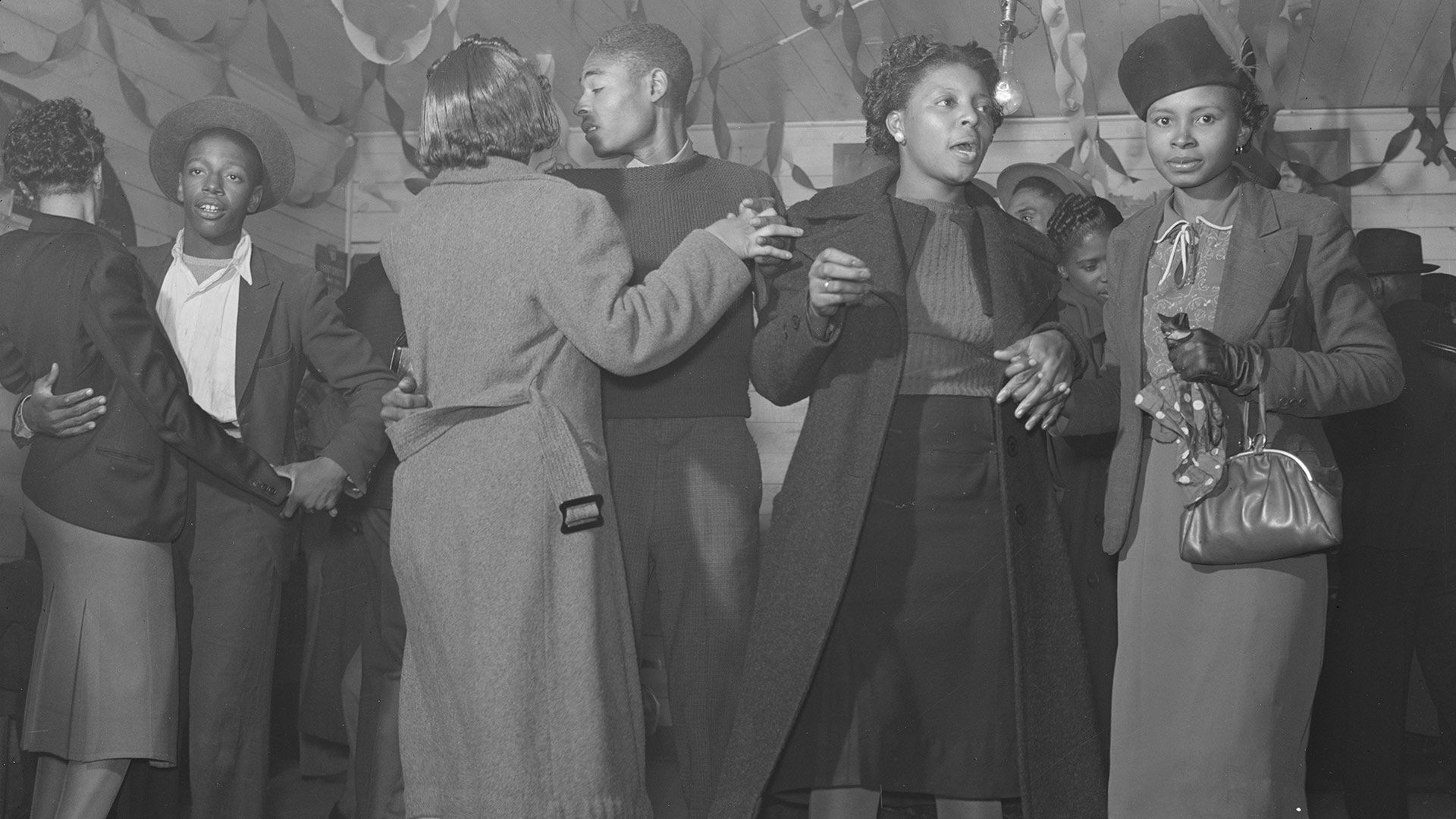
History
Shaped by the African American Experience
The Evolution of Blues Dance
Despite enslavers’ attempts to eradicate African Americans’ heritage, African roots persist and are evident in blues music and dance characteristics such as layering rhythms, emphasis on improvisation, and a call and response format. Lyrics and music express everyday life experiences, often reflecting themes of hardship, from racism and poverty to personal relationships. Learning by watching and copying, as well as valuing innovation and creation of an individual’s unique personal style within the given aesthetic, is also part of the cultural tradition.
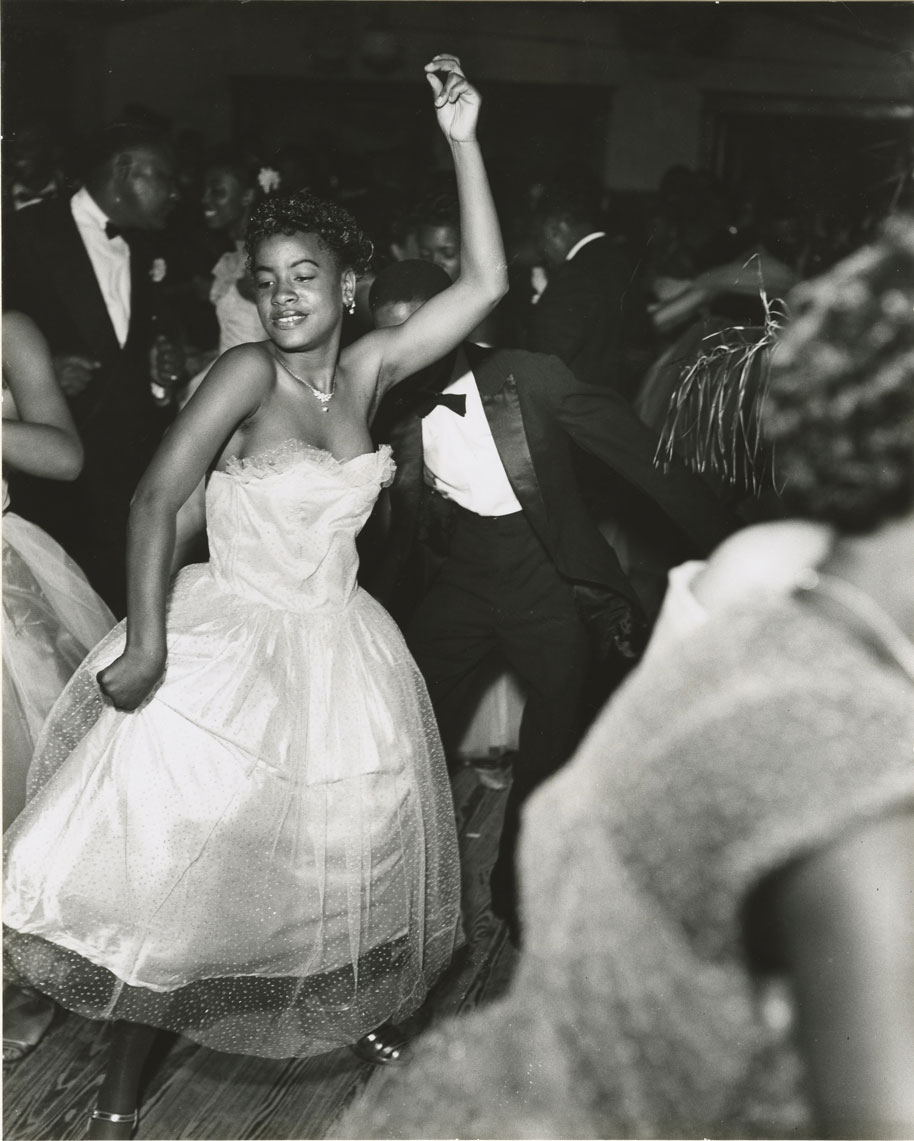
African Americans Dancing at Labor Temple Hall, Bon Temps Carnival Ball, New Orleans, Louisiana, 1953. Ralston Crawford Collection, Hogan Jazz Archive, Tulane University Special Collections.
Music and movement for African Americans during enslavement was often limited to activities such as Christian prayer meetings, work chants, and entertainment for plantation owners. After emancipation, African Americans gradually had more freedom to gather, play music, and dance on their own. Field hands in the South socialized in juke joints, small shacks where beer and liquor were sold, one or two local musicians played, and people danced. In Northern cities during the Great Migration of the 1920s, middle-class blues and jazz musicians and dancers gathered in small apartments for occasions like rent parties. African Americans danced—and continue to dance—on front porches and street corners, and in homes, back rooms of restaurants, community centers, and ballrooms.
Lindy Hop, which originated in African American communities of Harlem in the 1920s, was popularized in mainstream American culture in the 1930s. It saw a second revival in popularity at the end of the 20th century. At that time, Lindy Hop communities began dancing to blues music at their late-night events. As this became more popular, separate blues dance communities emerged in major cities. At first blues dancing was done without a clear understanding of its origins, but current trends within the blues dance community are to actively encourage research, education and appreciation of African American, music, dance and history.
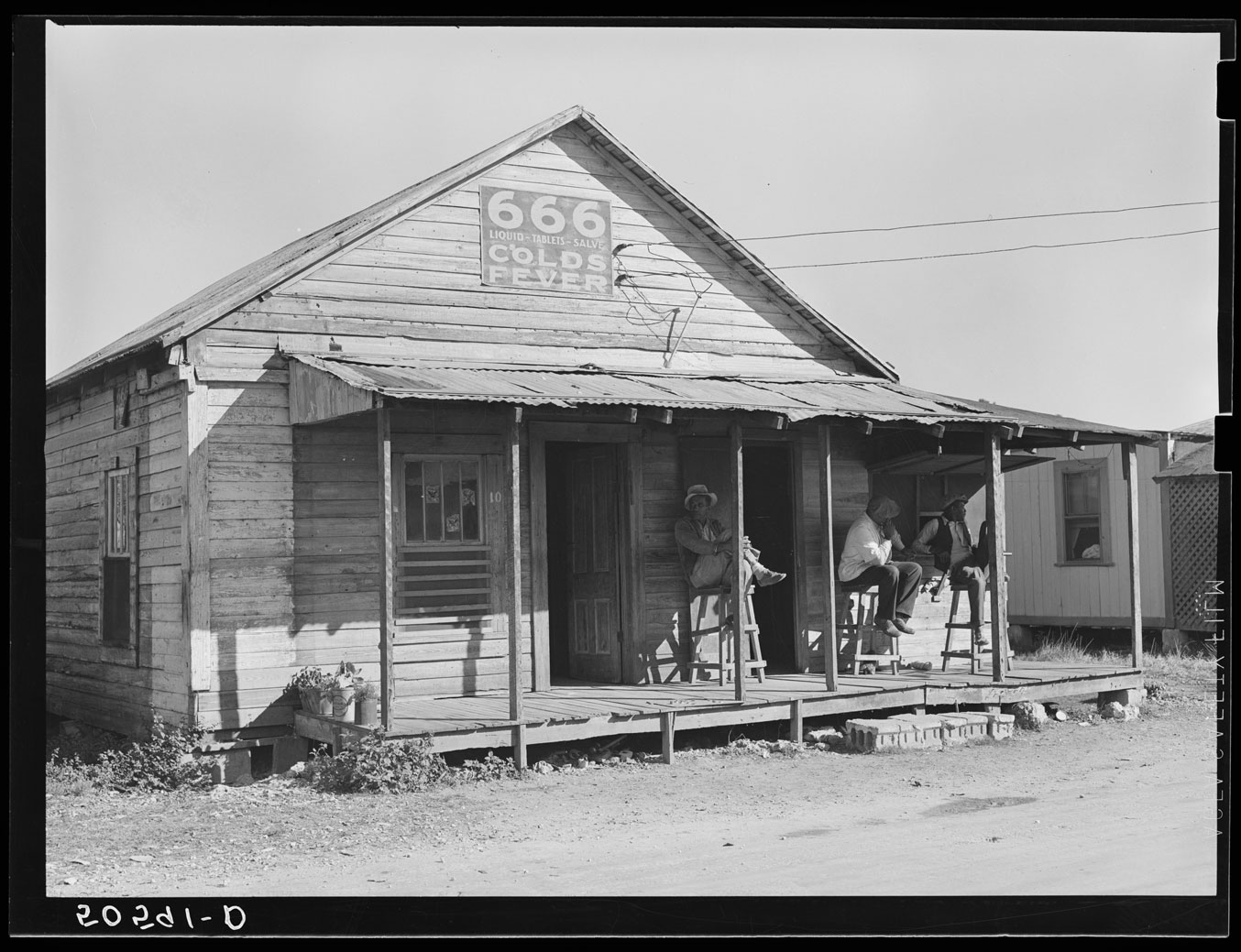
Juke Joint, Homestead, Florida, 1939. By Marion Post Wolcott. Farm Security Administration, Library of Congress.
Popular Dances That Originated in African American Communities
African American music and dance has dramatically impacted the evolution of American music and dance. Many forms of dance, like blues, originated in African American communities and were later popularized, adapted and integrated into mainstream culture. For example, have you ever heard of any of the following dance crazes?
- Ballin’ the Jack
- Barracuda
- Big Apple
- Black Bottom
- Boogie Woogie
- Bop
- Bounce
- Break Dancing
- Bump
- Bunny
- Hug
- Bus Stop
- Buzzard Lope
- Cabbage Patch
- Cakewalk
- Camel Walk
- Charleston
- Conga
- Continental Disco
- Disco
- Duck Dog
- Electric Slide
- Fishtail Freak
- Funky Charleston
- Funky Chicken
- Grind
- Grizzly Bear
- Harlem Shake
- Hip Hop
- Humpty Hump
- Hustle
- Jerk
- Krumping
- Lindy Hop
- Fish Tail
- Madison
- Mashed Potato
- Monkey
- Moonwalk
- Mooch
- Pigeon Wing
- Pony
- Rumba
- Running Man
- Shimmy
- Slop
- Smurf
- Snake Hips
- Stepping
- Stroll
- Tap Dance
- Texas Tommy
- Turkey Trot
- Twerking
- Twist
- Walkin’ the Dog
- Wobble
Cultural Appropriation versus Appreciation
African American dancer Damon Stone, a leading authority on blues dance, has this to say in his article “Appropriation versus Appreciation” (external link):
I want to start off by stating what follows is obviously my opinion. I can no more speak for all Black people, or even all Black Blues dancers, than you can speak for every person of your race.... The difference between appropriation and appreciation is simple to navigate if you think of it as appreciation means you come to a thing wanting to learn, be a part of, and to give back as an active participant, and appropriation means you come to sample, take, and alter to suit your personal needs.Damon Stone
African American culture has significantly impacted broader American culture in many ways, including in dance and music. Dance forms, including Lindy Hop, Hip Hop, The Twist, and many others were created within African American communities but later popularized within mainstream communities. These are complex histories. Blues dancers today have opportunities and responsibilities to learn, to be a part of communities, and to support other artists.
Further Readings
Read more of Damon Stone's thoughts on the issue of cultural appropriation versus appreciation in his article linked below.
Appropriation versus Appreciation by Damon StoneLearn more about Blues Dance and African American culture through the A Blackness and Blues Blog by Grey Armstrong, an African American blues dance instructor. This blog discusses themes of blackness, black culture, blues music and blues dancing.
A Blackness and Blues BlogPicture Gallery
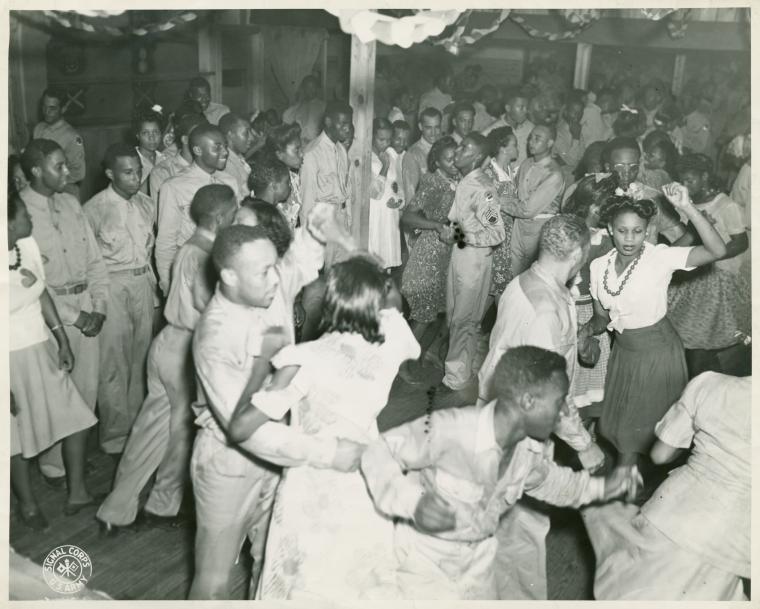
African American Soldiers and Civilians Dancing in a Recreational Facilities Hall, United States, 1939-1945. By Unknown Photographer. Schomburg Center for Research in Black Culture, New York Public Library.
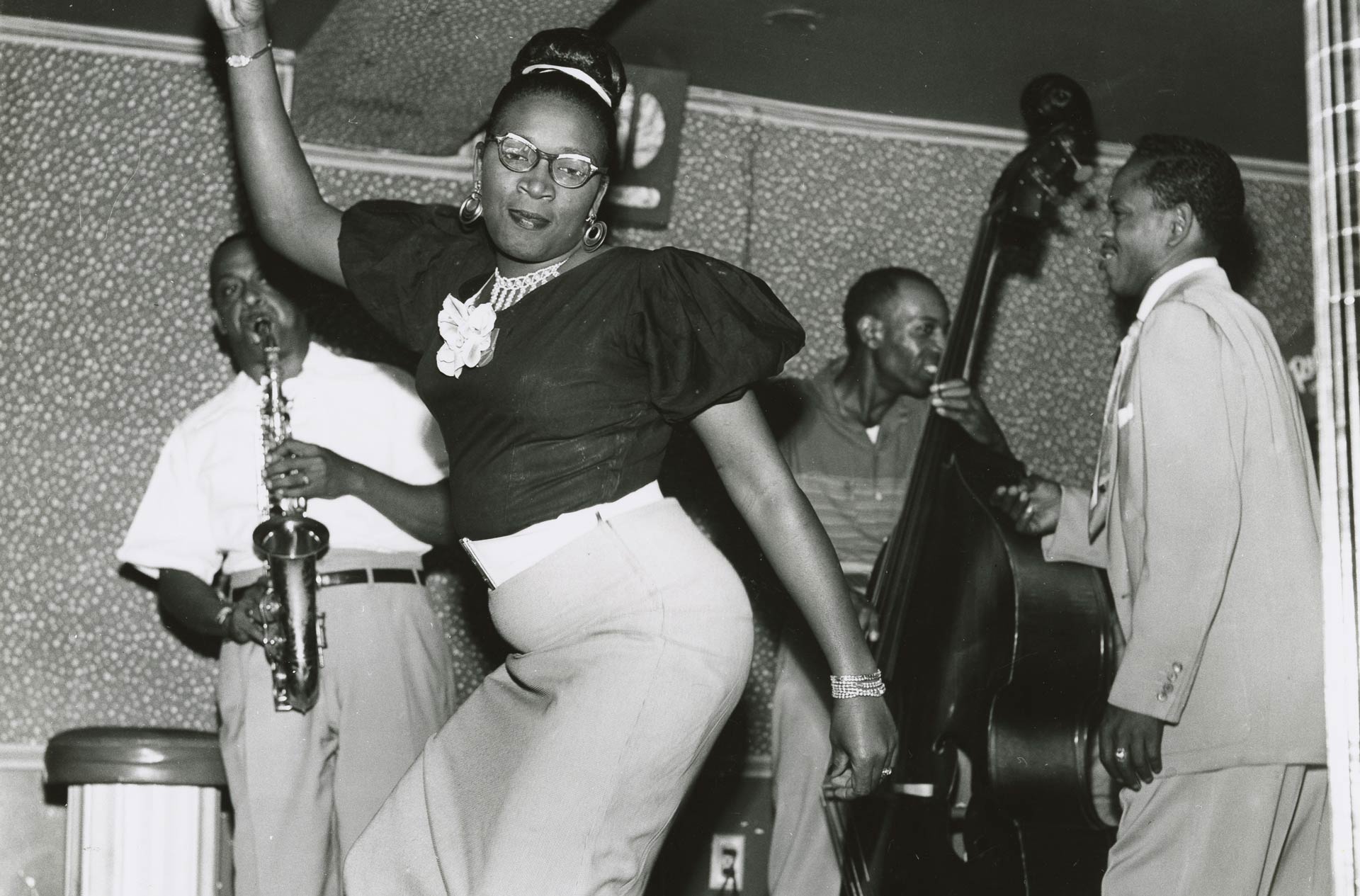
African American Dancing at the Caravan Club, New Orleans, Louisiana, 1953. Ralston Crawford Collection, Hogan Jazz Archive, Tulane University Special Collections.